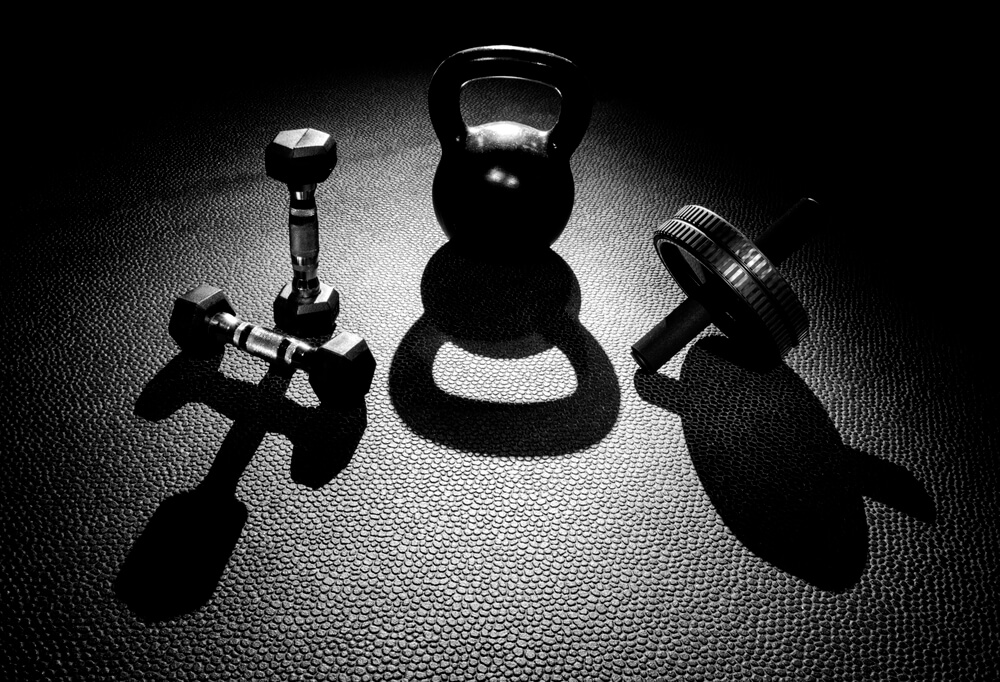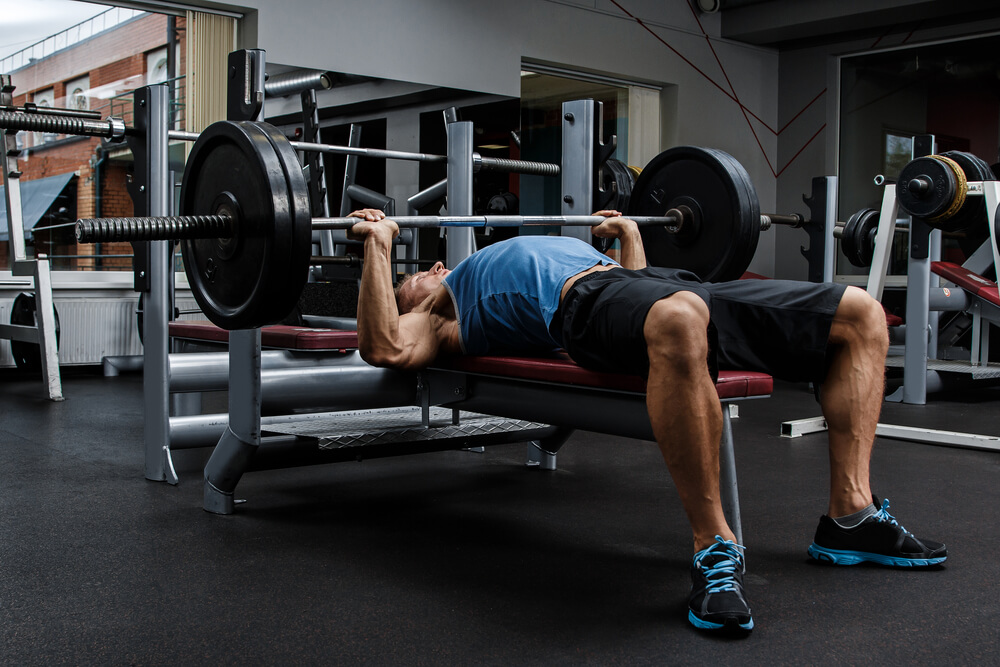
Ever go to the gym and not know what to do? Your answers are here! Get the skinny on reps and sets and start growing.
Sets and repetitions for training programs are the most commonly misunderstood part to creating an effective workout program.
Some people have too many sets with reps that do not match. Others have low reps with mismatched loads. There are several ways to create an ineffective training program through the improper use of sets and reps.
But, no one wants that. Instead, we’re going to teach you how to plan your training and get started on seeing actual gains.
Are you ready?
What Are Sets?
Most of you know what a set is. But, because there’s always someone just starting out, we’ll get this out of the way quick. A set is the number of times you do an exercise for a specific amount of reps.
Sets are often the first number used in a training program. For example, 5x8s means that there are 5 sets that you will be doing for 8 reps. This is a pretty common way to read what people discuss about sets and reps. Make note of this in your mind if this sounds like something new.
Sets are always customizable and usually have to do with how many exercises have been chosen, the amount of load that will be used and if the program is customized for training purposes. Think about it like this: If you are doing 1 to 12 reps, then you will most likely do 3 to 5 sets. Now these sets are determined by the amount of exercises.
Most programs actually only have 5 to 7 exercises being performed, assuming you’re only focusing on two areas on the same day.
Here is a perfect example to further break this down to make sure you have the right mindset when choosing sets. Let’s say you are doing a back and biceps training day. The first two exercises are big lifts with heavy loads and low reps, so you will do 5 sets for each of these two exercises.
Moving on to isolation, you perform them with moderate loads and do 3 to 5 sets with these depending on your energy levels and experience.
Basically the first two lifts use the most energy for your training. This means you use the max amount of 5 sets for basic training programming. Going beyond this is customized training. The lifts that follow are lower in weight and give you the room to change things up to fit your needs.
What are Reps?
Repetitions, or reps, are the amount of times you do an exercise within a set. As mentioned, they are the second number in a program listing. Reps are based on your training program and chosen load amounts.
The result is that workouts are often useless.
For example, using a heavy load setting with 10 reps is ridiculous and probably not even possible for most. A heavy load usually should be done for around 1 to 5 reps. Then moderate loads should be done for 6 to 10 reps. Lighter loads are usually done for at least 10 reps. As you can see, the amount of weight being used is the primary reason for the amount of reps being chosen.
Weight and reps determine the type of training you will be doing. Lighter loads with higher reps means you want to burn fat and create muscle definition. Moderate loads with moderate reps means you are seeking to increase muscle size and strength. Heavier loads with lower rep counts usually are for those hoping to increase power and further the process of muscle development.
Training Volume Is The Sum Of It All
Training volume is what you are trying to figure out when you put all the pieces of the puzzle together.
Which pieces?
The pieces are the sets, reps and weight. Use the following formula to determine your training volume: Volume equals sets times reps times weight.
You can see that volume is primarily made up of your sets and reps, and you can’t determine those without weight being put into the equation. Volume is quite important for any program and fits in with the terms load and frequency. When used with these two terms,
When used with these two terms; load can sometimes be considered simply as the amount of sets and reps. Load becomes the amount of weight used. Frequency is how often you train.
A training program that properly incorporates volume will be highly effective, regardless of whether it is for power gains, muscle growth or fat loss. Volume will always be the determining factor for your training program. It should be tested often to see if the volume you have chosen is effective. You will come to find in the next sections that there is a lot more to sets and reps.

How Many Sets and Reps For Customized Training Programs?
You can easily perform a training program with a mix of different sets and reps to make sure your body is trained hard. Here is an example of a customized training program using back and biceps training:
Exercises Sets Reps
Regular Deadlifts (super heavy) 5 5, 4, 3, 2, 1
Bent Over Rows (heavy) 5 4-5
Good Mornings (moderate) 4 6-8
Lat Pull Downs (moderate) 4 6-8
Barbell Biceps Curls (heavy) 5 6-8
Reverse Curls (moderate) 4 8-10
Supinated Grip Pull-Ups (light) Until Failure
This is a well-established custom training program. You can see that the set and rep counts vary throughout the training. They are based on primary lifts and the weights being used. The first lift is very heavy.
The second supplements this lift with heavy training. Then isolation exercises follow ending with a burnout until failure. This means you do it until you can’t do any more reps. This technique is also called training until muscle failure.
Routinely Change The Loads To Match Your Sets and Reps
Your body is going to progressively get stronger when a proper workout program is being used. With this comes the need to increase the load being lifted to match your sets and reps. Take the example workout provided earlier. If you stick to using the same weight, the sets and reps are basically useless for gains.
At that point it becomes more for body maintenance. If this is what you seek, then by all means keep to it.
Progressive overload is great for this because you are literally progressively adding more weight to your workout every training day. The weight being lifted may only be an extra 2.5 pounds and it will still be great for results. Without doing this, and making changes to your volume and frequency, your training program may begin to suffer.
Research has also shown that established training programs without many changes could cause a training plateau. Of course, this is when you do not experience any further results from your workouts. You may possibly even lose some of your gains instead. Don’t let that happen!
How Do I Choose Set And Rep Counts For Bodyweight Training?
Bodyweight training is a bit different.
Why?
The resistance is coming solely from what your body weight and nothing more. This could cause some concern for those who are used to training at the gym often, and your reps within a set may have a higher number than usual. This actually reverses the process slightly.
How?
You determine the amount of reps first and then go about figuring out however, many sets to go along with them.
For example, a bench press workout would have you do 5 sets and 8 reps. But, a bodyweight push-up program is going to have you do 3 sets of 50 reps. Basically, what happens is you execute a high number of reps to create enough resistance that causes the push-ups to match the training received through weight training.
However, you can add resistance by doing negatives. This is when you slow down the exercise and make the strain more intense. For this type of training, you have to lower the number of reps from what was previously discussed. Those 50 reps for push-ups should be dropped to only 10, or even lower. It all depends on your strength and muscle endurance. You can always mix up the two different approaches to create an effective bodyweight workout program. Find what works!

Experience Is A Big Factor When Creating A Program
Choosing the right amount of sets and reps sometimes depends on your experience level. Athletes with experience will be using up to 5 sets for their exercises and usually not more than this. The reps will be a max of 10, depending on the load being given. This is what fits in the best with this type of athlete experience level, unless they’re doing a cutting cycle that is cardio and strength based.
The average fitness enthusiasts will do light to moderate exercises. Heavy training may not be used as much, because the experience required to be lifting heavier loads has not yet reached. Plus a spotter is not always present, so most of the medium level athletes are going to push themselves the hardest with moderate loads. That means reps are in the 8 to 10 range. The newer trainees will not be doing high sets and reps without proper instructions from a trainer.
People who are new to training will usually not go above 3 sets to make sure they don’t strain their muscles. Muscles that are not used to the new tension and resistance movements should not be doing higher reps. And, that’s even if the number of sets are low. Reps should range from 8 to 10, but with loads slightly below moderate levels.
Making The Safe Choice During Recovery
Injuries happen and recovery is required to get your body back to the way it normally was. During recovery, strength training is usually advised by physicians and physical therapists as it helps increase the recovery rate and strengthens your muscles and bones.
Why?
Recovery rate increases because when you increase the blood flow to an area, nutrients are brought with it to help repair the damaged cells.
Set and rep counts are at lower numbers for recovery. You want enough exercises to help with the healing process. These are not to focus on any muscle gains. Worry about that stuff once you have recovered.
Lower set and rep counts means you should do around 2 or 3 sets, and about 5 to 8 reps unless told differently by a certified official. This, along with low impact cardio, is your safest bet to keeping your injury in check without causing more damage.
Age could also be a factor that you should consider. Flexibility, bone density, and muscle strength tend to start to drop drastically around the age of 40. Cardio and strength training are the primary concerns for this, just like recovery. Sure, there are men and women lifting pretty heavy loads around this age group. But, that is because they have been training for quite some time. Men and women not experienced should do 2 or 3 sets with 8 to 10 reps using light to moderate weight settings.
Conclusion
You can create an effective workout. The info provided should give you a good insight into how to choose the right amount of sets and reps. This has a lot to do with your physical capabilities, loaded resistance, age and even what your training program is intended for. Once you figure out these details you shouldn’t have any trouble to make the type of program you want.
By Brian Pankau, CPT
Latest posts by Terry M (see all)
- Garage Gyms - Aug 1, 2018
- Kettlebells – Why They Should Be Added To Your Routine. - Jul 24, 2018
- Weight Belts: What Are They Really For? - May 31, 2018











[…] Pull the weight up towards your shoulder, keeping it parallel to the bench. Three reps of twelve should do the trick, or, if that’s not enough, feel free to increase the reps. […]
[…] Instead, whether you are building muscle or losing fat, you will have varying degrees of macronutrients such as carbs. A metabolic workout with low rest periods and a HIIT session at the end requires a lot of carbs compared to a neurological workout with long rest periods and few, heavy reps. […]
[…] you did one or two more reps this week compared to last week. This way, it is easy for you to see results, and know that you are […]
[…] Instead, whether you are building muscle or losing fat, you will have varying degrees of macronutrients such as carbs. A metabolic workout with low rest periods and a HIIT The session at the end requires a lot of carbs compared to a neurological workout with long rest periods and few, heavy reps. […]
[…] Instead, whether you are building muscle or losing fat, you will have varying degrees of macronutrients such as carbs. A metabolic workout with low rest periods and a HIIT session at the end requires a lot of carbs compared to a neurological workout with long rest periods and few, heavy reps. […]
[…] Instead, whether you are building muscle or losing fat, you will have varying degrees of macronutrients such as carbs. A metabolic workout with low rest periods and a HIIT session at the end requires a lot of carbs compared to a neurological workout with long rest periods and few, heavy reps. […]